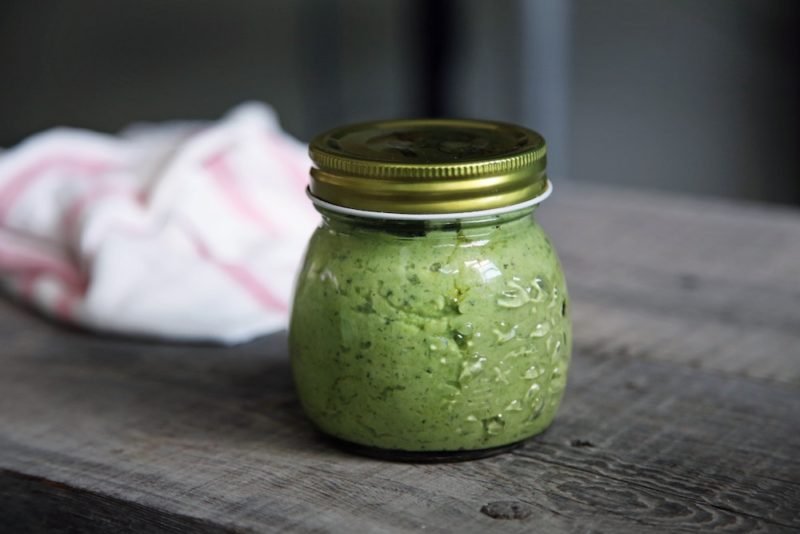
Since I try to eat seasonally as much as possible, there are certain foods and tastes that remain strongly linked to summer: Basil, sweet corn, tomatoes, watermelon. Picking a favorite is hard, but the scales do tend to tip toward basil, since whenever I eat it I think of Italy, which is on my long list of “places I have not yet visited but will visit, by hook or by crook.”
Fresh basil is a stunning example of simple perfection when its leaves are mingled with summer tomatoes and fresh mozzarella (either layered on a platter with slices of each, or tossed in a pretty bowl with halved cherry tomatoes and small mozzarella balls, also halved). A generous splash of olive oil and a touch of salt and pepper is all that is needed in the way of dressing.

But pesto…pesto is a slightly more complicated concoction, but not terribly. And it is so versatile! It can be used to sauce pasta, of course, but it can also be stirred into a just-finished risotto, mixed into scrambled eggs, spread onto sandwich bread or dolloped on grilled fish, chicken or meat. It also serves as a wonderful dressing for cold salads of cooked vegetables or grains, or perhaps white beans and tuna. Add a spoonful to a homemade vinaigrette for a change of pace. Or mix some into a white bean dip! I could go on, but I won’t.
Basil, along with other herbs, contains a number of healthful plant compounds. When you use it in pesto, you also gain the healthy fats and phytochemicals from nuts and olive oil and garlic. Pesto is quite easy to make if you have a food processor or decent blender. I use a food processor now that I have one, but I used to rely on a blender. If you are really inspired (or simply gadget-free), you can even use a mortar and pestle! (I actually tried this once, just for fun.)
This is my base recipe. It can be easily doubled if you have a food processor, but it’s easier to stick to the single recipe if you are using a blender (or mortar and pestle). I use the proportions as a guideline, and if you look around, you’ll find a zillion variations of pesto, all slightly different. One important note: Most pesto recipes (including this one) traditionally call for pine nuts (pictured above). When the price of pine nuts (already a spendy nut) went through the roof a handful of years ago, I switched to the more economical walnut. I’ve not gotten around to switching back, so feel free to choose your nut according to your budget.

Pesto
Makes about 2/3 cup
Ingredients:
- 1 cup firmly packed fresh basil leaves
- 2 tablespoons pine nuts or chopped walnuts
- 2 teaspoons minced garlic
- 6 tablespoons virgin olive oil
- 1 tablespoon + 1 teaspoon firmly packed grated Parmigiano-Reggiano or pecorino Romano cheese
- salt, to taste
Method:
- Wash and dry the basil (a salad spinner works well). Place in the work bowl of the food processor or blender with the nuts and the garlic. Process/blend until you have a coarse and grainy paste.
- With the motor running, add the olive oil in a slow, steady stream (this will take about 5 seconds). Use a rubber spatula to scrape the paste (still grainy) into a bowl.
- Add the grated cheese to the pesto paste. Mix well with the rubber spatula or a spoon. If you feel like it’s too thick, stir in a bit more olive oil. Add salt to taste.






